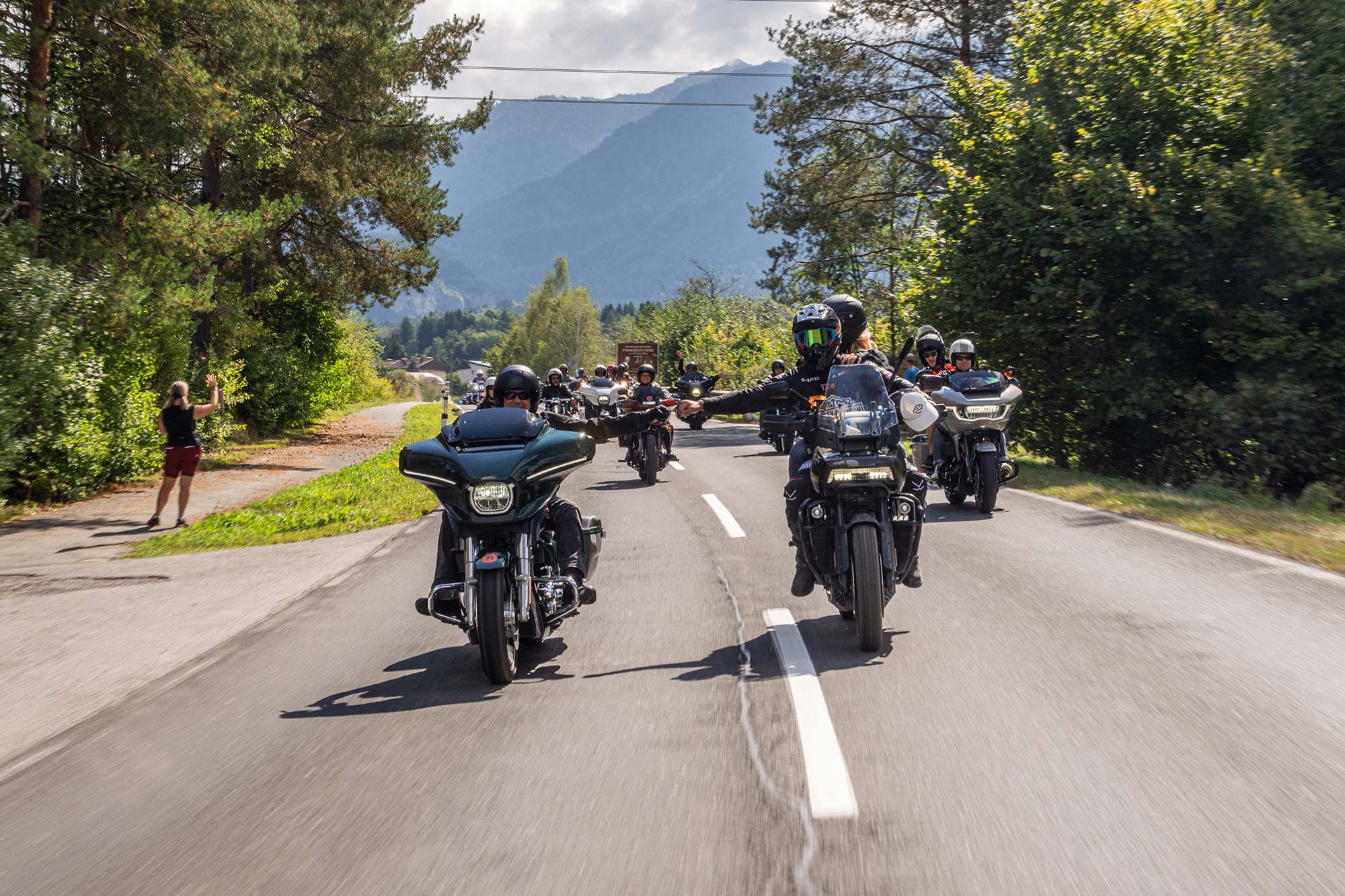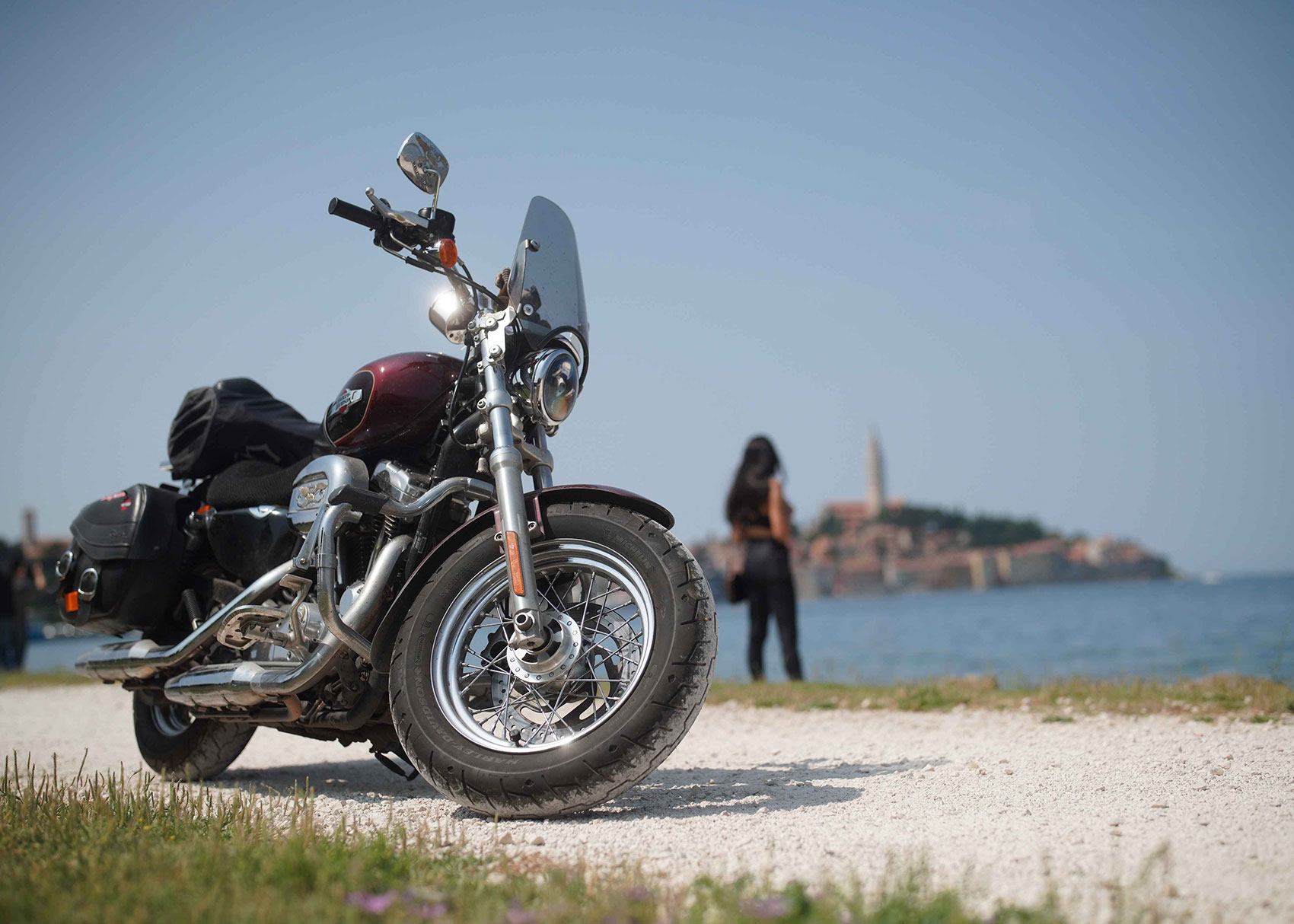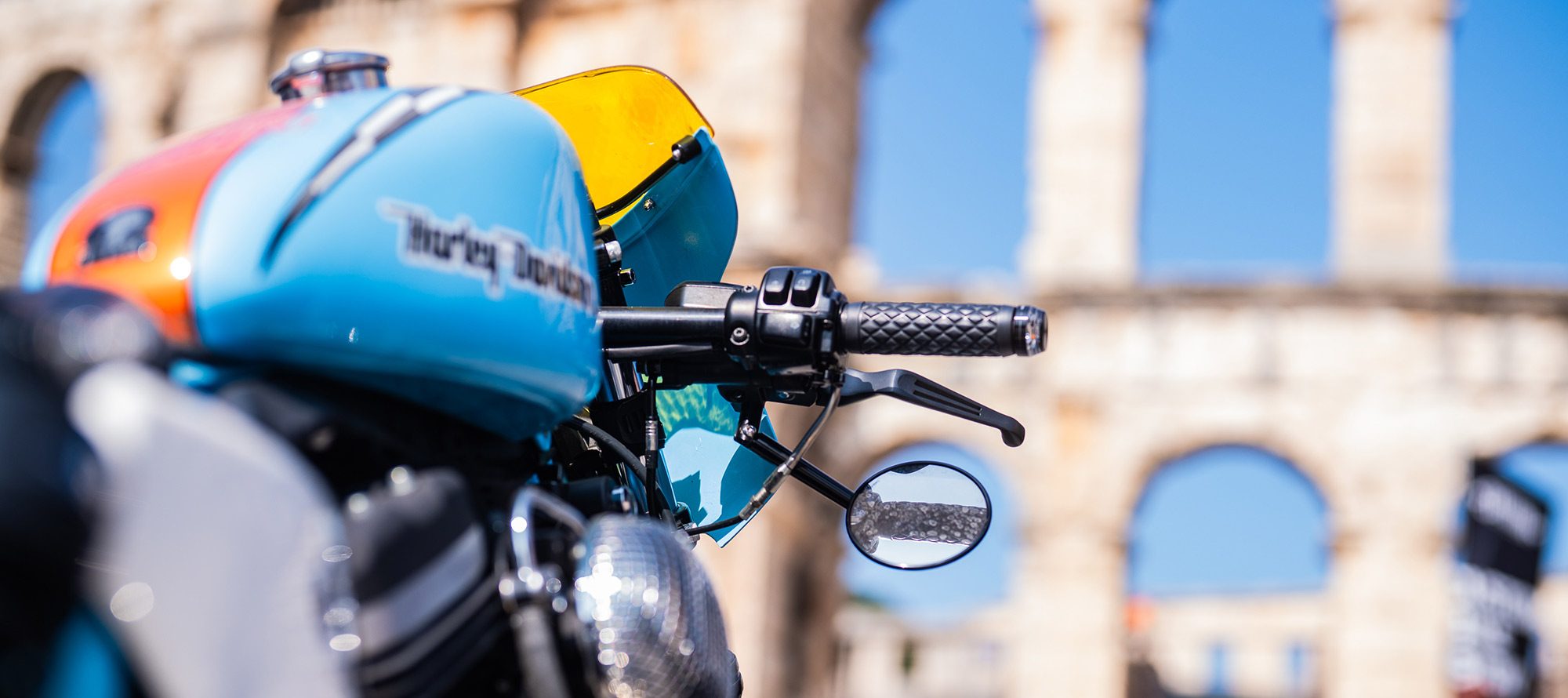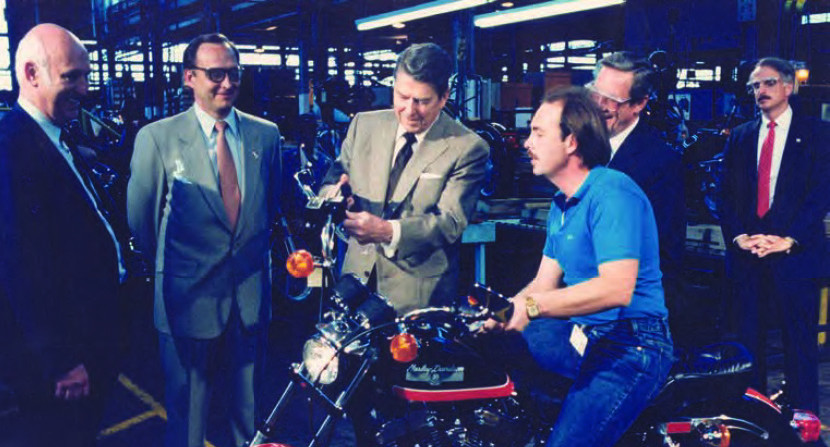
Into the ’80s: the saga continues
After the buyback, a long road to recovery lay ahead.
After more than a decade under AMF’s ownership, 13 members of the company’s management, led by CEO Vaughn Beals, pooled their resources, borrowed the rest, and purchased Harley-Davidson® back from AMF in June of 1981. The risk was huge, and there was no longer a larger parent company to divert cash into Milwaukee. Harley-Davidson’s new-found independence was like moving away from an overbearing parent – in the middle of winter with no money or steady job.
America was in a recession. Most damaging to the motorcycle market were inflation and high unemployment. Interest rates soared, and credit markets favoured inexpensive imported motorcycles. In a shrinking market, Honda and Yamaha were in a battle for American turf with cheap, high-quality motorcycles. HarleyDavidson’s motorcycle sales dipped to levels not seen in more than a decade.
Overseas competitors were also ‘dumping’ new motorcycles into the US, shipping excess inventory to the US to be sold at discounted prices. Harley-Davidson’s own quality issues were not helping the situation, and outdated manufacturing processes resulted in high inventory.
One might think all this was already more than a struggling Motor Company could bear. But it wasn’t over. In late 1984, H-D®’s primary lender informed the company it had to find another creditor by early 1985. It was hard to imagine things getting much worse.
But steps had already been taken, within months of the buyback of 1981, that would ultimately lead to a landmark comeback. Where others wanted the American motorcycle market to be a race to low pricing, Harley-Davidson was taking it in the direction of tradition and quality.
Manufacturing Vice President Tom Gelb formulated what came to be known as the ‘Productivity Triad’: Manufacture as Needed, Employee Involvement and Statistical Operator Control combined to better control inventory, lower costs, increase quality and empower factory line employees.
Additionally, an engine from an AMF-era strategy got a second look. AMF had planned to develop a series of water-cooled V-4 engines (Project Nova) as the company’s next-generation powertrain. Part of the launch plan was to introduce a stopgap ‘evolutionary’ air-cooled V-twin engine to replace the Shovelhead, in service since 1966. Introduced for the 1984 model year, the Evolution® engine was oil-tight, quieter and more modern than any previous H-D V-twin. It also provided an unprecedented lifespan, while retaining every last bit of the essential Harley® motorcycle look, sound and feel.
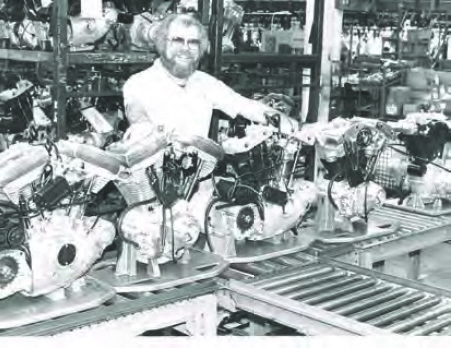
Equally groundbreaking was a new chassis in the 1984 FXST Softail® model. Originally introduced to H-D by a rider and engineer who found a way to hide the rear suspension, the modified design and platform led to a family of motorcycles that still stands next to today’s Touring family in popularity.
Meanwhile, a new demonstration fleet of motorcycles put riders on the latest bikes. The response was specific and unanimous: the bikes were vastly better but still every bit Harley.
In the midst of these significant product and manufacturing changes, Harley Owners Group® (H.O.G.®) was created in 1983. H.O.G. brought dealers and customers a step closer to the company, and made it easier than ever to join the H-D family. H.O.G. membership quickly grew to embrace nearly a million members worldwide today. It was the first factorysponsored motorcycle club and is easily the largest.
Until the mid-’80s, the Motor Company had not been vigorously protecting its trademarks and copyrights, enabling an industry of counterfeiters to use the H-D name, logos and graphics on inferior (or tasteless) products. Counterfeiters began receiving cease-and-desist letters, and H-D began formal licensing of products. It was critical to protect the image and value of the legendary Bar & Shield.
And what about the ‘dumping’ of imported motorcycles into the US? A petition for tariff protection was approved in 1983, with a term of five years. Amazingly, H-D rebounded far and fast enough that it actually petitioned for an end to the tariff two years early, a move not seen before or since in American commerce.
Just one year earlier, Harley-Davidson stock had been offered on the American Stock Exchange; next was the New York Stock Exchange, in 1987. The stock offering and the tariff termination were proof that H-D was standing on solid ground.
Many other efforts carried the company’s resurgence into the late 1980s and early ’90s. Motorcycle production doubled within a decade. The dealer network was growing bigger and stronger. By the 1990s, the American motorcycle industry was experiencing a renaissance, with Harley-Davidson firmly at the forefront.
While it hasn’t yet been fabled in story and song, Harley-Davidson’s return to success in the 1980s has been talked about, mythologised and studied in business schools around the world. Considered one of the more stunning turnarounds in American business history, it remains an important part of the H-D legacy.
Tags:
Read more tales from the Harley Owners Group!
Croatian Sunshine
The 31st European H.O.G. Rally returned to celebrate under blue skies in Medulin from 12-15 June 2025
In the pink
Creative imaginations were let loose on a spectrum of Harley models, with the top entries showcased along the marina
